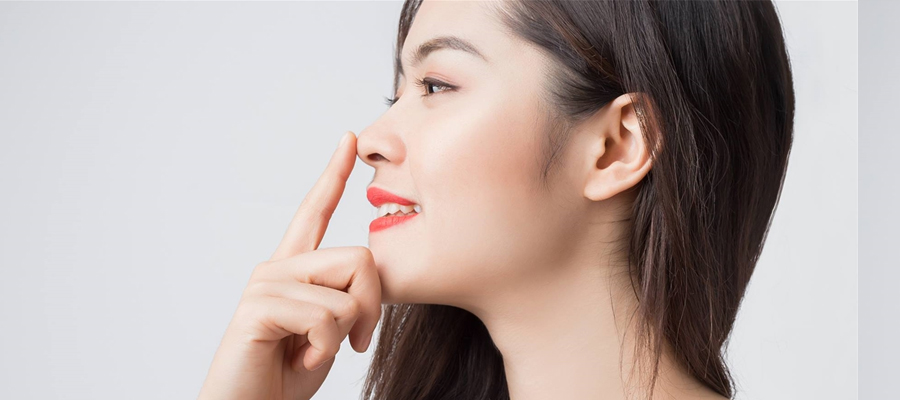
Estimated reading time: 6 minutes and 46 seconds
Tip Rhinoplasty
If you’re unhappy with the shape or size of the tip of your nose, you may be considering tip rhinoplasty. This cosmetic procedure can reshape and enhance the appearance of the nose tip, resulting in a more balanced and proportionate facial profile. But before you schedule your consultation with a plastic surgeon, it’s important to understand the procedure and what it involves. In this article, we’ll explore everything you need to know about this operation.

Tip Rinoplasty Before – After
What is Tip Rhinoplasty?
Tip rhinoplasty, also known as nasal tip surgery, is a cosmetic procedure that focuses on reshaping the tip of the nose. This procedure can correct a variety of issues, including a drooping or bulbous tip, a crooked tip, or a tip that’s too wide or narrow. The surgery is often performed as part of a full rhinoplasty, but it can also be performed as a standalone procedure.
How is Tip Rhinoplasty Performed?
Tip surgery is typically performed under general anesthesia or local anesthesia with sedation. The surgeon will make incisions either inside the nostrils or on the columella (the tissue that separates the nostrils) to access the underlying cartilage and bone. The surgeon will then reshape the tip of the nose by removing or adding cartilage and repositioning the remaining cartilage to create the desired shape. The incisions are then closed, and a splint is placed on the nose to help it heal.
What are the Risks and Complications of Tip Rhinoplasty?
Like any surgical procedure, this surgery also carries some risks and potential complications. These may include infection, bleeding, poor wound healing, and adverse reactions to anesthesia. Additionally, patients may experience asymmetry, scarring, or a need for revision surgery.
Who is a Good Candidate for Tip Rhinoplasty?
Good candidates for tip rhinoplasty are individuals who are unhappy with the shape or size of their nose tip and have realistic expectations for the procedure. Candidates should also be in good overall health and have fully developed facial features, typically around age 16 for females and age 18 for males.
How Do I Choose a Plastic Surgeon for Tip Rhinoplasty?
When choosing a plastic surgeon for tip surgery, it’s important to do your research and select a board-certified surgeon with experience performing this specific procedure. Look for before-and-after photos of previous patients and read reviews to get an idea of the surgeon’s skill and patient satisfaction.
Are the Results of Tip Rhinoplasty Permanent?
The results of tip rhinoplasty are generally long-lasting, but they may not be permanent. Aging, injury, and other factors can affect the appearance of the nose over time.
Risks and Complications
If you’re considering the surgery, it’s important to be aware of the potential risks and complications associated with the procedure. While most patients experience successful outcomes, there are certain risks that can arise from any surgical procedure. Some of the risks and complications associated with tip surgery include:
- Infection: Infection is a risk with any surgical procedure, including tip rhinoplasty. While rare, infection can cause complications and may require further treatment.
- Bleeding: Bleeding is a common complication of the surgery. While minor bleeding is normal following the procedure, excessive bleeding can lead to complications.
- Scarring: Scarring is a risk with any surgical procedure, including tip rhinoplasty. While your surgeon will try to minimize scarring, it is possible that some scarring may occur.
- Numbness or Tingling: Following tip surgery, some patients may experience numbness or tingling in the nose or surrounding areas. This typically resolves within a few weeks, but in rare cases, it may be permanent.
- Breathing Problems: In some cases, tip rhinoplasty can lead to breathing problems. This can be caused by a number of factors, including swelling or changes to the structure of the nose.
- Poor Cosmetic Outcome: While most patients experience successful outcomes following tip surgery, there is a risk of poor cosmetic results. This can be caused by a number of factors, including improper healing, scarring, or surgical error.
It’s important to discuss these risks with your surgeon prior to undergoing tip rhinoplasty. By understanding the potential risks and complications, you can make an informed decision about whether this procedure is right for you.
Tip rhinoplasty is a surgical procedure that can improve the appearance and function of the nose. By reshaping the tip of the nose, patients can achieve a more balanced and aesthetically pleasing appearance. While there are risks and potential complications associated with any surgical procedure, most patients experience successful outcomes following tip rhinoplasty.
If you’re considering this operation, it’s important to choose a skilled and experienced surgeon who can help you achieve your desired results. By working with a qualified professional and understanding the risks and benefits of the procedure, you can make an informed decision about whether tip rhinoplasty is right for you.
Frequently Asked Questions
Is tip rhinoplasty painful?
The procedure is performed under anesthesia, so patients will not experience pain during the surgery. After the procedure, patients may experience some discomfort or mild pain, but this can be managed with pain medication prescribed by the surgeon.
How long does recovery take after tip rhinoplasty?
The recovery period after tip surgery varies depending on the individual patient and the extent of the procedure. Most patients can return to work and normal activities within a week to ten days after the surgery, but it can take several weeks to fully recover.
Will I have visible scars after tip rhinoplasty?
Scarring is a risk with any surgical procedure, including tip rhinoplasty. However, skilled surgeons take care to make incisions in inconspicuous areas and minimize scarring as much as possible.
Can tip rhinoplasty be performed under local anesthesia?
This operation is typically performed under general anesthesia, which allows the patient to sleep during the procedure. However, some surgeons may be able to perform the procedure under local anesthesia in certain cases.
What is the cost of tip rhinoplasty?
The cost of the operation varies depending on a number of factors, including the surgeon’s experience, the location of the practice, and the extent of the procedure. On average, the cost of tip rhinoplasty ranges from $3,000 to $10,000.
Will I be able to breathe properly after tip rhinoplasty?
In most cases, tip rhinoplasty should not affect a patient’s ability to breathe properly. However, in some cases, changes to the structure of the nose can cause breathing problems.
How long do the results of tip rhinoplasty last?
The results of the surgery are long-lasting, but they may not be permanent. As with any surgical procedure, the aging process and other factors can affect the results over time.
Can tip rhinoplasty be performed in combination with other procedures?
Yes, this operation can be performed in combination with other procedures, such as septoplasty or chin augmentation. Your surgeon can discuss your options with you during a consultation.
How long after tip rhinoplasty can I resume normal activities?
Patients can typically resume normal activities within a week to ten days after the procedure. However, strenuous activities and exercise should be avoided for several weeks to allow for proper healing.
Am I a good candidate for tip rhinoplasty?
Whether you are a good candidate for the surgery depends on a number of factors, including your overall health, the structure of your nose, and your desired results. It’s important to consult with a qualified surgeon to determine if this procedure is right for you.
Author: Burak Dikmen
Click here to visit Burak Dikmen’s website.


 TR
TR FR
FR ES
ES RU
RU RO
RO